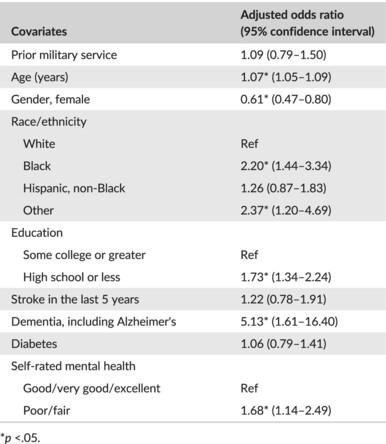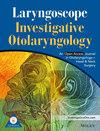Olfactory dysfunction (OD) is a condition primarily affecting older adults. Several factors have been implicated in OD, such as age, socioeconomic status, and neurodegenerative disease; however, the effect of military service still requires additional investigation. Here, we aim to determine if there is an association between prior military service and OD among older adults.
This cross-sectional study included 2268 adults from Round 1 of the National Social Life, Health, and Aging Project. OD was defined as 0–3 odors correctly identified on the 5-item Sniffin' Sticks test. Bivariate analysis was conducted to calculate crude odds ratios (cOR) for the association of prior military service with OD and identify covariates for regression. Associations between prior military service and OD were assessed using logistic regression, and adjusted odds ratios (aOR) were calculated controlling for age, gender, race/ethnicity, education, stroke history, dementia, diabetes, and mental health. All analyses were weighted using survey weights to account for sampling design.
OD was present in 489 adults (21.6%). Among those with OD, the average age was 71.0 ± 7.9 years, whereas the average age in those without OD was 67.0 ± 7.2 years. Among adults with OD, 34.4% reported prior military service, compared to 27.7% of adults without OD (cOR = 1.37; 95% CI: 1.05–1.79). However, after adjusting for covariates, prior military service was not associated with OD (aOR: 1.09; 95% CI: 0.79–1.50). Older age (aOR: 1.07; 95% CI: 1.05–1.09) and worse mental health (aOR: 1.68; 95% CI: 1.14–2.49) were associated with OD.
Prior military service was not associated with OD among older adults after controlling for covariates. More nuanced research is needed to examine correlations between OD and specific elements of military service such as duration, toxin exposure, and head trauma.
Level of Evidence: Level 4.



